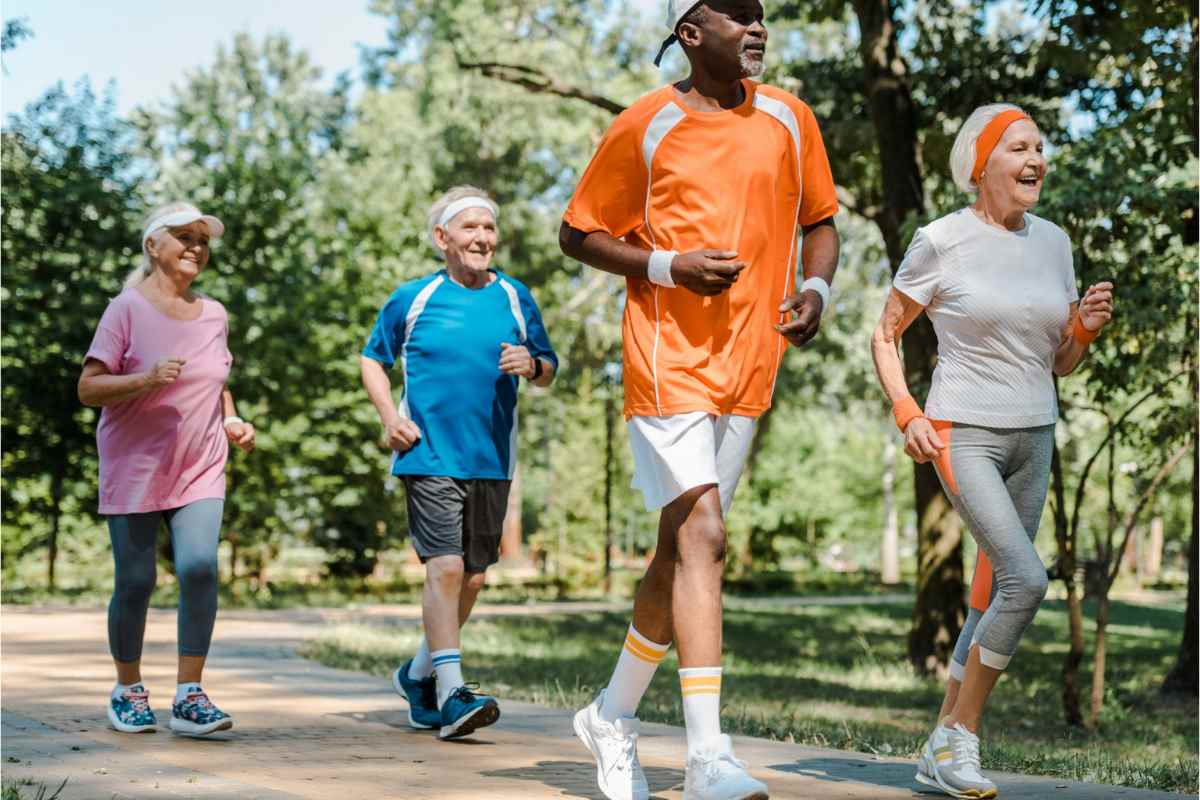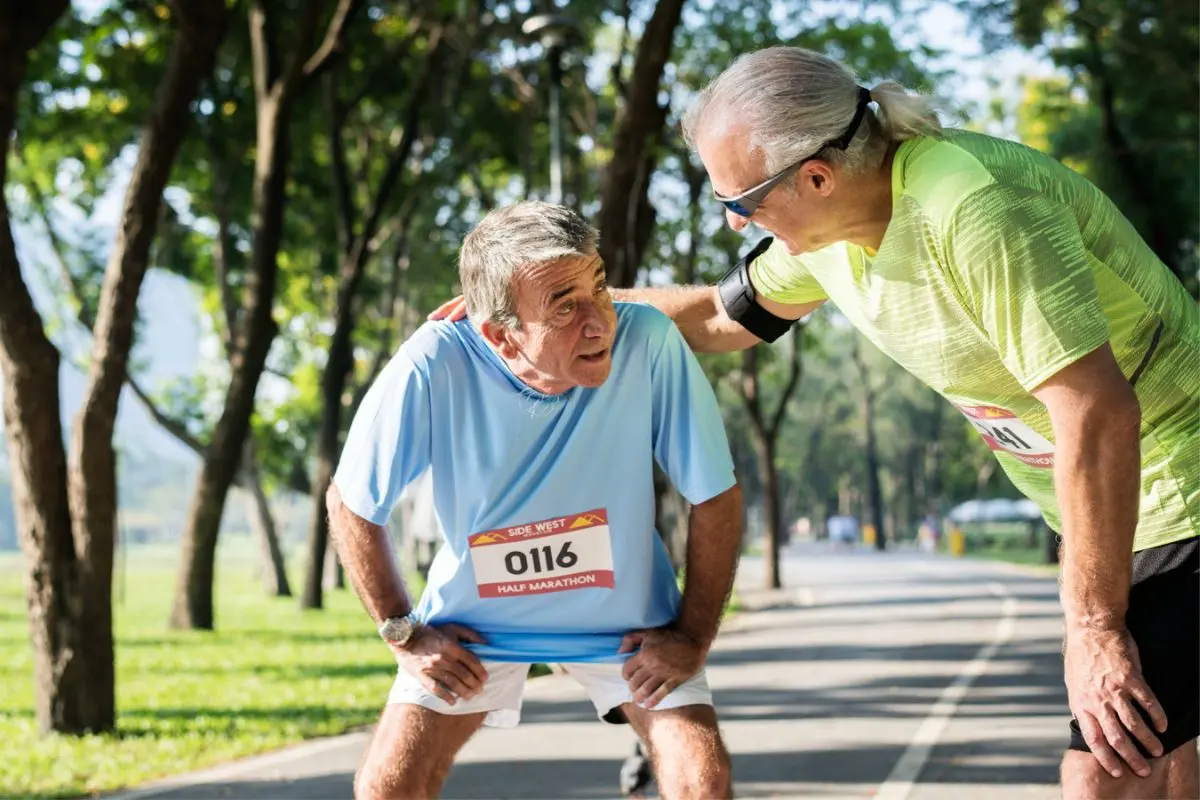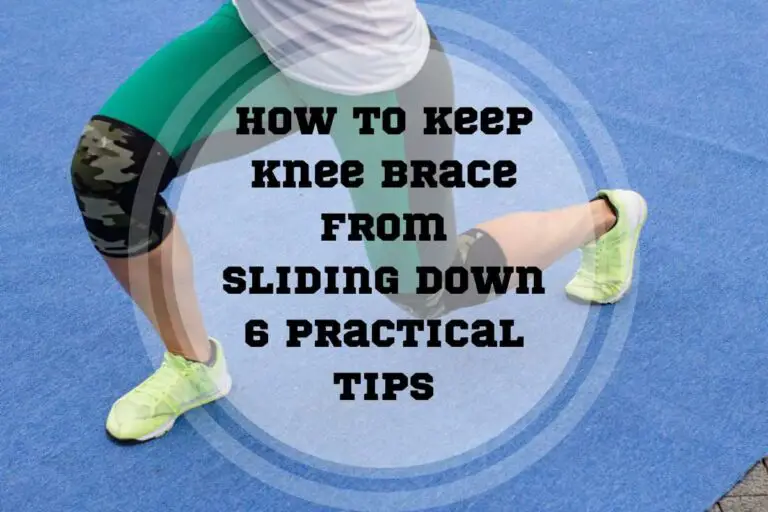Running for Seniors: Tips, Benefits, and Safety Precautions
Running for seniors can be a great way to get the physical health benefits of exercise. In this blog post, we will discuss how older adults can safely start running and enjoy its multiple benefits.
From tips on finding motivation to advice on staying safe while exercising at an older age, we cover it all! So whether you’re just starting out or are already an experienced runner, read on to find out what you need to know about jogging for seniors.
Is Running a Beneficial Exercise Option for Seniors?
Running for seniors is safe if they take necessary precautions, such as consulting with a healthcare professional about any pre-existing conditions and paying attention to pacing and volume. Benefits include higher bone density, reduced muscle loss, improved joint flexibility, increased aerobic capacity, and reduced risk of injury.
Is Running Safe for the Elderly?
Starting or returning to running can be a rewarding experience for the elderly, both physically and mentally. While it is important to remember that our bodies become more susceptible to injury as we age, with careful preparation and patience, running can be enjoyed at all stages of life.
The aging process includes a loss of muscle mass, which occurs even in those who maintain regular exercise regimens. This means that older runners must think critically about incorporating other types of workouts into their routines, not only to prevent muscle loss, but also to improve overall mobility.
Muscle loss and decreased flexibility reduce running performance, making it harder to maintain speed and endurance. Reduced mobility and tendon flexibility also mean that it is harder to maintain proper form, increasing the possibility of injuries. Cardiovascular health also declines with age, leading to reduced aerobic capacity, meaning older adults may find running more strenuous or tiring compared to younger athletes.
Fortunately, running after 50 can be beneficial for both physical health and well-being, provided that it is done safely, with consideration given to any pre-existing medical conditions or injuries.

What Are Senior Runners Called?
As a runner over the age of 40, you may have heard terms like “master,” “grand master,” and “senior master” floating around. These are all categories of running meant for older athletes.
In most cases, runners in these categories compete with others in their specific age groups, rather than competing against all participants within track and field events.
5 Benefits of Running for Seniors
Running offers a variety of physical and mental health benefits for seniors.
1. Improved Cardiovascular Health
Maintaining a healthy heart and circulation is just as important for seniors as it is any other age group. Regular running training over 50 can help reduce the risk of metabolic conditions, such as diabetes, stroke, and heart disease.
Running keeps the cardiovascular system in peak condition, resulting in improved overall health. It helps to lower blood pressure by improving cardiac capacity and strengthening arteries.
2. Increased Bone Density
Running after 60 is an effective way to build stronger bones, reduce the risk of osteoporosis, and prevent stress fractures. Increased bone density helps seniors avoid injuries related to age-induced weakening of the bones.
Through repetitive weight-bearing activities such as running, the body increases muscular strength while also building up more robust bone mass. A higher amount of muscle can support more significant compression and decrease pressure on the bones at joints such as the ankles, knees, and hips.
3. Weight Management
Regular running helps with burning calories and maintaining a healthy body composition. Research shows that running reduces body fat, which can be challenging to lose as we age.
In addition to toning muscles, running also increases metabolism, which typically slows down after 40. This means that you can burn more calories, even during rest.
4. Mental Well-Being
Running engages the brain, leading to improved cognitive functioning such as better memory and focus. For elderly runners, this often translates to more productive days, without feeling overwhelmed or easily distracted.
Additionally, research shows that regularly engaging in physical activity like running reduces levels of anxiety and depression, which some seniors may be dealing with.
5. Social Engagement
Participating in group activities like running clubs or attending social running events can provide older adults with motivation to stay active and healthy as they age.
Studies have shown that seniors who engage in social activities have improved overall health, lower rates of disease, and increased longevity. Social interaction also helps relieve feelings of loneliness to promote a better sense of well-being among the elderly population.
3 Disadvantages of Running for the Elderly
Despite the numerous benefits of running for older adults, there are several risks associated with this activity.

1. Increased Risk of Injuries
For seniors who plan to start running or begin again after a lapse in physical activity, there is an increased risk of injury and overexertion. Factors that contribute to this risk include age-related muscle loss and certain pre-existing health conditions.
Common injuries that seniors may experience while running include Achilles tendinopathy, plantar fasciitis, iliotibial band strain (ITB), and shin splints.
The aging process can cause muscles around the joints of older adults to weaken, which makes them more susceptible to sprains and strains from physical activities like running. Additionally, some health issues, such as arthritis and diabetes, can increase the likelihood of injury.
2. Pre-Existing Health Conditions May Limit Running
Pre-existing health conditions may limit or even prohibit elderly people from running. It is important that seniors consult with their healthcare providers about any restricted activities. Their physicians will be able to explain what limitations should be taken into account if they wish to start running safely. For instance, diabetes and high blood pressure can affect aerobic capacity.
Other health issues, such as arthritis, may also cause issues for runners if they affect joint mobility or cause added strain on muscular support structures. Furthermore, some individuals become more susceptible to dehydration and heat exhaustion due to medications.
Subscribe to Our Running Newsletter!
Get free running tips from renowned professional athletes and discounts from top-notch brands.
3. Slower Recovery Time
With advancing age, runners’ recovery times can be much slower than those of younger people. Specific age-related changes negatively impact older individuals’ ability to return to optimal performance levels after running.

Pro Tip:
To help alleviate this, try active recovery practices to rebuild muscles and allow soft tissue to repair itself. Such practices include foam rolling, good-quality sleep, healthy nutrition, and massage.
Running for Seniors: 5 Tips on How to Start Running
By following the right steps to start running for seniors, you can enjoy all of its amazing health benefits while ensuring your safety and well-being.
1. Consult with a Healthcare Professional
Before getting started on any running regimen, it is important for seniors to consult with a healthcare professional. This ensures that the intensity and duration of their running activities are appropriate for their age, health history, and physical condition.
An experienced doctor or nurse will be able to answer any questions related to when they should start running, how far they should run, and how often they should exercise. They can also suggest potential modifications in order to ensure safety while still achieving high fitness goals like marathon training for seniors.
2. Choose an Appropriate Type of Running
If starting at an older age or returning to running after a long break, opting for walking or incorporating walking intervals is wise at the beginning. This will help get you into shape before transitioning into running and slowly increasing your speed and distance.

Pro Tip:
Walking and jogging are two of the safest forms of aerobic exercise that seniors can do on a regular basis without straining themselves. With time, you can add longer runs or try some hill sprints if you feel no pain and are ready to increase loads.
3. Warm-Up and Cool Down Properly
A proper warm-up prior to running helps get the body ready for exercise by gradually increasing heart rate, priming muscles, and mobilizing joints. This can reduce risks associated with sudden exertion.
Warm-ups should include slow, dynamic, sustained stretches, focusing on the muscles in the thighs. Cooling down after exercise is also important. This helps alleviate excessive muscle soreness and allows your body to recover more efficiently from a run.
4. Wear Proper Footwear
Without the right shoes, runners risk uncomfortable pounding on their joints and muscles that can lead to soreness and potential long-term damage. When shopping for the best running shoes for seniors, it’s important to consider fit. The shoe should be laced securely so as not to move around during activity.
Also, consider support. A footbed with proper cushioning will help absorb force and protect the feet.
5. Incorporate Strength and Flexibility Training
Strength training, and specifically exercises that target major muscle groups, can help to improve overall performance while running by increasing muscle endurance and reducing the risk of injury.
Exercises like body weight workouts for the upper and lower body, as well as dumbbell strength training, can be effective when done correctly. Furthermore, balance exercises, which involve specific movements with resistance that work on motor control coordination, can also be beneficial for elderly runners.
What Distances Should Elderly People Run?
Age plays a major role when it comes to determining safe running distances for seniors. The rules become much stricter as people get older, so appropriate mileage limits should be set in order to prevent injuries or overexertion.
Here are some general recommendations for elderly running, depending on age:
| Age | 40-50 | 50-60 | 60+ |
|---|---|---|---|
| Total miles per week | Up to 30 miles | Up to 22 miles | Up to 17 miles |
However, these numbers are just a general rule. Experienced runners can run more, while some older people need to decrease the distance for safety.
Establishing a safe running pace also helps reduce the possibility of injury. Generally speaking, elderly runners should strive to maintain an even-paced run where breathing remains steady and controlled, without feeling overly strained or exhausted afterwards.

How Often Should Seniors Run?
The amount of running that the elderly can participate in depends on their current physical fitness levels, any pre-existing health conditions they may have, and their intended goals for exercising.
Running too much or at too high of an intensity could increase the risk of injury or exhaustion, as seniors tend to recover more slowly than younger people. Consistent low-impact exercises like walking and jogging with regular rest days are generally recommended for seniors who want to incorporate running into their routine.
| Age | 40-50 | 50-60 | 60+ |
|---|---|---|---|
| Days/week | Every other day | 3 times a week | 2-3 times a week |
For those aged 60+, it is advised to maintain moderate-intensity aerobic activity such as brisk walking at least 3 days per week to reduce risks associated with aging, including weight gain and cardiovascular disease.
Frequently Asked Questions About Running for Older Adults
Can a 70-Year-Old Man Run?
Absolutely! Running at 70 years old can be a safe and beneficial form of exercise. However, it is important to make sure that you consult with your doctor before starting or returning to running in old age.
How Many Days a Week Should a 65-Year-Old Run?
Although the frequency and intensity of running should be adjusted according to individual abilities and preferences, 2-3 days a week at low or moderate intensity is considered ideal for runners aged 65+ years.
Is It OK to Run at 60 Years Old?
It is absolutely okay for 60-year-olds to run, as long as they do so with caution. Running can be a great way for seniors to stay active and improve their overall health, mental well-being, and social engagement.
Final Thoughts on Elderly Running
Running at an older age comes with its own set of challenges and opportunities, but with the right safety precautions and appropriate running protocols, it can help seniors reap significant health benefits in their golden years. While there is no one-size-fits-all approach, elderly runners should consult with a healthcare professional to determine what type of running program is best for them.
Are you en elderly runner? Please share your experience and running habits in the comments below.
Also Read:
- Are Eggs Good Before a Run
- Sprint vs Run
- Can Basketball Shoes Be Used for Running
- 100 Mile Training Plan
- Running in Heat and Humidity
- Protein Shake After Running
- 2 Miles Is How Many Steps
- Best Men’s Running Shoes for Narrow Flat Feet
- Why Runners’ Toenails Fall Off
References:
- Luo M, et al. Social engagement pattern, health behaviors and subjective well-being of older adults: an international perspective using WHO-SAGE survey data. BMC Public Health. 2020;20(1):99 https://bmcpublichealth.biomedcentral.com/articles/10.1186/s12889-019-7841-7
- Azzolino D, et al. Musculoskeletal Changes Across the Lifespan: Nutrition and the Life-Course Approach to Prevention. Front Med (Lausanne). 2021;8:697954 https://www.frontiersin.org/articles/10.3389/fmed.2021.697954/full
- Lui PPY, et al. Biology of Tendon Stem Cells and Tendon in Aging. Front Genet. 2020;10:1338. Published 2020 Jan 16 https://www.ncbi.nlm.nih.gov/pmc/articles/PMC6976534/
- McPhee JS, et al. Physical activity in older age: perspectives for healthy aging and frailty. Biogerontology. 2016;17(3):567-580 https://link.springer.com/article/10.1007/s10522-016-9641-0
- Vajda M, et al. Aging and Possible Benefits or Negatives of Lifelong Endurance Running: How Master Male Athletes Differ from Young Athletes and Elderly Sedentary?. Int J Environ Res Public Health. 2022;19(20):13184 https://www.mdpi.com/1660-4601/19/20/13184
If you have any questions or suggestions, you can contact us via email – [email protected]






